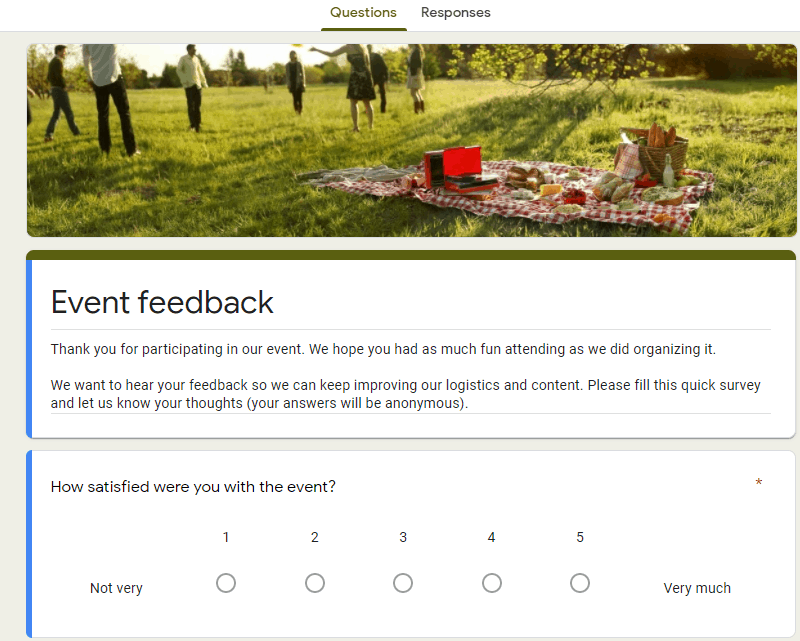Every business, and I mean every business, needs to collect and use customer feedback.
For a number of reasons small businesses mistakenly think they don’t need to run customer surveys. But when you do decide to get serious about really understanding what your customers think, which customer survey tool should you use?
Let’s look at the options and the secret gotcha they all have so you can make an informed decision.

How to Decide Which Tool is Right
To asses which tool is best you need to know what you’re trying to do.
For customer satisfaction surveys the goal is pretty straight forward: collect satisfaction feedback from customers.
However, as a small business, the tool you select needs to meet four key requirements:
Price
It is easy to pay a lot of money for a customer survey tool but that’s viable for a small business. So the price has to be appropriate.
Not only are high priced tools painful in terms of budget, they can also have features that small businesses don’t need.
Time To Implement
While price is important so is the time it takes to set up the tool. Business owners have a lot on their plate and time is probably their most precious resource.
Often it’s a better business decision to use tool that takes less time to implement but costs a little more.
Time to Execute
Collecting customer feedback is an ongoing task so it should be quick and easy to send survey invites.
You don’t want to be putting off gathering customer feedback because it takes too long to run the process.
Understand what it’s telling you
Collecting the data is only a small part of the customer survey effort.
To be worthwhile you need to act on the data, so the tool should report the data collected from customers in a way that helps you to understand what you need to do to improve.
Survey Tool Options
So now we have the attributes we want to compare, let’s look at the options.
Dedicated On-line Survey Tools: Survey Monkey et. al.
It seems that as long as there has been an internet there have been on-line survey tools. Probably the most well known of these is SurveyMonkey but there are tens of other companies that deliver similar functions at a range of price points.
These tools allow a user to create surveys, collect results, download responses and display the results in simple charts.
For a small business any one of these tools will work as a customer survey engine. They all have similar features and all do the critical tasks that are needed in a customer feedback survey.
However, one problem with these tools is that over time they have become more and more complex as customers demanded ever more features.
This allows them to perform complex and sophisticated survey tasks; from a simple customer feedback survey to a sophisticated branching market research survey with stratified sample quotas.
When you buy one of these services you are buying a lot of functionality – way more than you will ever need for a small business customer feedback survey.
But that comes sophistication comes at a price. The wealth of functionality can make it complex to set up and create a steep learning curve. There are so many options and settings that it can be difficult to know what needs to be done.
Below are a range of well known (in the survey industry) sites that can perform customer feedback surveys with a short summary on the price point. All of these tools will easily handle a customer survey.
Dedicated Small Business Customer Survey Platforms
| Survey Platform | Summary and Price |
|---|---|
| SurveyMonkey | Probably the best known of all the on-line survey systems this will do everything that is required for the customer feedback process. Price: Starts at USD25 per month. |
| SogoSurvey | The personal plans here would be appropriate for small businesses customer surveys. Price: Starts at USD25 / month for one user. |
| Checkbox | This is a big business tool but has a small business hosted pricing tier. Price: Starts at USD20 / month per user. |
| ProProfs | This company has created a range of business applications. Their survey platform is called “Survey Maker” Price: “Priced per response” approach that equates to USD25 / month for 500 responses per month. |
| Kwik Surveys | This less well known tool provides the lowest cost “dedicated platform” solution price. Price: Starts at USD12.99 / month for one user. |
| Typeform | Billed as a “form builder” this tool can effectively double as a customer feedback data collection tool. Price: Starts at USD25 / month. |
| Zonka Feedback | Leads with easy to use and offers a range of survey invite methodologies: email, SMS/Text, offline/kiosk and website prompts. Price: Starts at USD29 / month. |
| Paperform | Originally a “form builder” application, Paperform supports features necessary to create relatively sophisticated surveys, making it a “Swiss Army Knife” for small businesses. Pricing: Starts at USD 20/ month for one user. |
| Jotform Survey Maker | This tool is very easy to use due to their many templates and widgets. Use conditional logic to make your surveys unique for everyone. Price: Starts at USD34 / month for one user. |
| Visme Form Builder | This tool can let you build interactive, animated survey forms in minutes, without coding and design skills. With the analytics dashboard, you can monitor how your survey performed among respondents. Price: Starts at USD 12.5 / month |
Google Forms
“Forms” is part of the Google Workspace product offering: with Google Forms you can create surveys that you can send to your customers.

While there is a free version for personal use the business versions is included with Google Workspace. So if your business is using the Google Workspace the incremental cost is zero. Nice.
It also has the functionality that you will need to create and operate a great customer feedback survey.
The data from your survey responses auto-magically turns up in a Google spreadsheet so you can create charts and analyze the data in a familiar tool.
So there is lots to recommend the Google solution but there are a couple of downsides:
Google Doesn’t Hold your Hand.
Many of the dedicated on-line survey tools have detailed training and step by step workflows that explain clearly how to set up your survey. Their learning curve is step but at least they provide directions.
The Google tool is not difficult to use but it is a little bit like a blank slate. The features are there you just have to know how to find them and configure them to do what you want.
It can be non-obvious how to do some things and you can spend quite a lot of time, paradoxically, Googling for answers.
It is Not Feature Rich
The dedicated systems come with all manner of sophisticated question types, the ability to branch question flow, etc. Forms is pretty rudimentary by comparison.
However, it has all that you need for a good customer feedback survey. In some ways the lack of sophistication means it’s easier to configure and there’s less to go wrong.
WordPress Plugins
The WordPress content management system seems to be taking over the internet. 74.6 Million sites depend on WordPress and there are plenty of plugins that extend the functionality of the basic system.
Many of those survey plugins, more than 4 pages worth, can be used to create forms and capture customer responses. With that functionality they can also run your customer survey.
On the positive side many of the plugins are free or minimal cost. Free that is in terms of dollars but not in terms of time.
On the downside it can take a long, long time to find one that works for your needs and set it up the way you want it.
If you have ever added a WordPress plugin to your site, you know finding a reputable supplier is imperative. A bad software developer can break your site and cause endless hours of frustration trying to resolve the issue.
That unfortunately means that you can expend lots of effort finding appropriate plugins, investigating supplier reputations, installing plugins, uninstalling plugins, selecting the right one and finally setting up your survey.
Even then they probably don’t come with the standard features of either dedicated on-line survey tools or Google Forms.
Survey Tools as Addons to Other Business Platforms
Many business systems now come with simple customer survey functionality built in.
For instance Zendesk, Salesforce and HubSpot all include survey features either as part of the base platform or through some type of AppExchange.
It is also very probable that your IVR supplier has a customer survey module hanging around somewhere. (Not that I’d recommend post call IVR surveys.)
While they can be easy to use, these platform oriented tools are not as functional or flexible as you might like, even for simple customer feedback data collection. Their reporting and data access tools can be too simple.
In addition, they can be expensive due to the generally high cost of the platform in the first place. If you are not already using the platform they will be not be the best value for money.
On the upside they are often well integrated into the back end of the platform. In the case of Zendesk the survey is sent automatically after a ticket is closed.
The Secret Gotcha
It’s not clear but the secret gotcha in this process is that while all of these tools can help you build a customer survey what they don’t help with is what should be in the customer feedback survey and how you need to analyse and use the data.
All of the tools work very well but if you don’t have a blue print for your customer survey then the best intent in the world will not help you. It’s like buying a load of lumber. If you don’t know how to build a house, it’s just a load of lumber not a house.
Comparing the Tools
If we assume for the minute that you have a blueprint for the survey, which tool is right for you?
Below we have rated each tool types on a 1-5 scale where 1 is poor and 5 is great.
| Dedicated Tool | Google survey | CMS Plugin | Business Platform Add-on | |
|---|---|---|---|---|
| Price | 4 | 5 | 5 | 3 |
| Time to Build the Survey | 4 | 2 | 1 | 2 |
| Time to Send the Survey | 3 | 3 | 2 | 4 |
| Understand what it’s telling you | 3 | 4 | 3 | 3 |
| Total | 14/20 | 14/20 | 11/20 | 12/20 |
You can see that the Dedicated on-line tools and Google Docs come out about on top.
While the dedicated tools hand hold you better than Google, Google’s ability to put the results directly into spreadsheets (no downloading) to create charts and perform analysis is a real winner.
If you decide to go with a dedicated on-line tools, it really doesn’t matter which one you chose. They all do everything you need in terms of a customer feedback survey.
Just pick the one you like the look of the best.
Last updated: 1 November 2022.




